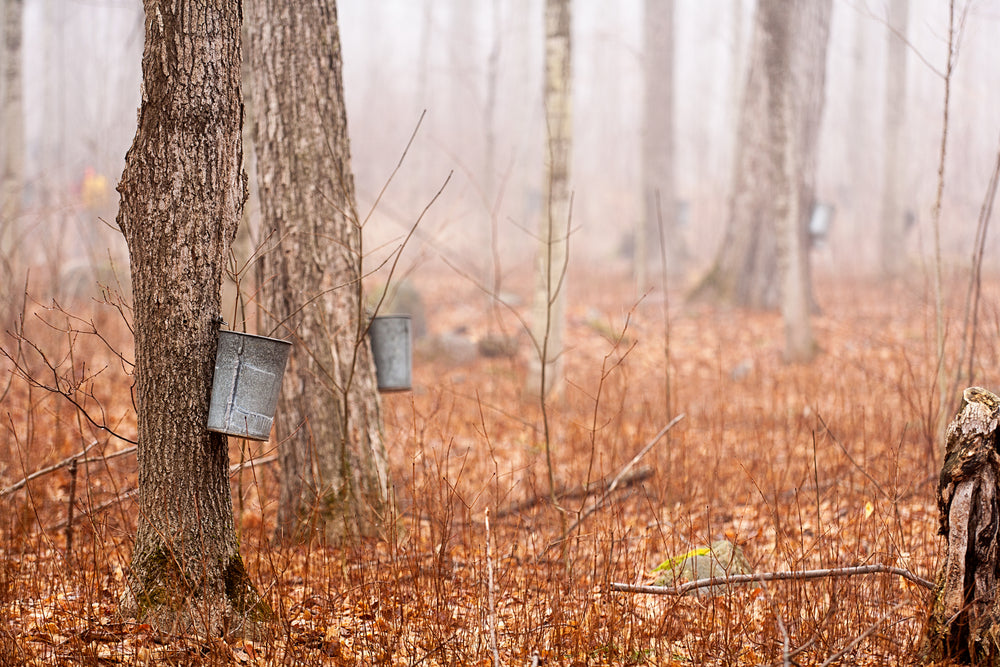"We're not having winter. The trees are trying to bud, they've been trying to do it since December. It's more than concerning. We all know that this was coming, it's here now. We're going to feast (prayers and ceremonies) the trees and let them rest."
- Renee Dillard respected Elder and basket maker of Little Traverse Bay Band.
"Due to the effects of the El Nino weather patterns combined with climate change, there hasn't been the usual snow accumulation that the maple trees need to produce a good supply of sap. We have decided that tapping would put too much stress on the trees and deplete the resources they need to survive the warm months ahead. Ininaatig (the man tree, maple spirit) stepped up to save the Anshinabe from starvation long ago and now we must do the same in return."
- Sault Tribe Cultural Department
Generations ago, beneath the vast skies of the Great Lakes region, the Anishinaabe people faced the wrath of winter's chill with declining sustenance. It was the maple tree, a giant among the forest of the Great Lakes Region, that offered them refuge and resources. Legends speak of the Maple Spirit, Ininaatig, who bestowed upon the Anishinaabe the knowledge to tap into the very lifeblood of these trees to forge nourishment from sweetness.
As we recount the Anishinaabe Story of the Maple Tree, we paint a portrait of resilience. A distressed man was granted this life-giving secret, transforming sap into precious syrup and sugar. The wisdom imparted was profound yet simple: work for your reward.
Yet, while the Anishinaabe reaped nature's kindness, they were also reminded by the trickster, Nanaboozhoo, that balance is due. Nanaboozhoo diluted the syrup into sap, decreeing that more effort must be made to obtain the precious sap.
Today, the symbolic strength that carried the Anishinaabe through famine now faces a formidable threat of its own—climate change. The same warmth once craved during frigid winters threatens the tradition of tapping the trees. It is with head bowed and a deep sense of responsibility that Indigenous tribes confront this new adversary.
Warmth no longer heralds blissful end-of-winters but instead casts a foreboding shadow over ancestral traditions. The sacred trees, which once served as a lifeline to a people, now stand at the mercy of our collective choices.
We find ourselves at a poignant crossroads. To tap, as we have for centuries, would be to endanger the saviors of our ancestors. Or, we can lay down our tools, forgoing the luxury of syrup to honor those ancient guardians—the maple trees.
In our hands, we hold more than spiles and buckets. We hold the power to make a difference. To secure the future of these trees is to safeguard our shared heritage, one rooted in resilience and rebirth. Let us choose wisely, for we are not just tapping sap; we are tapping into history itself.



